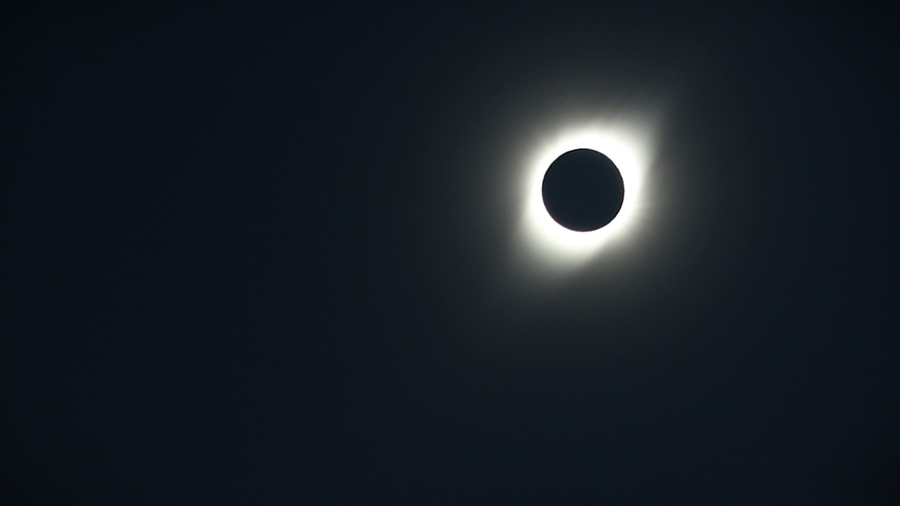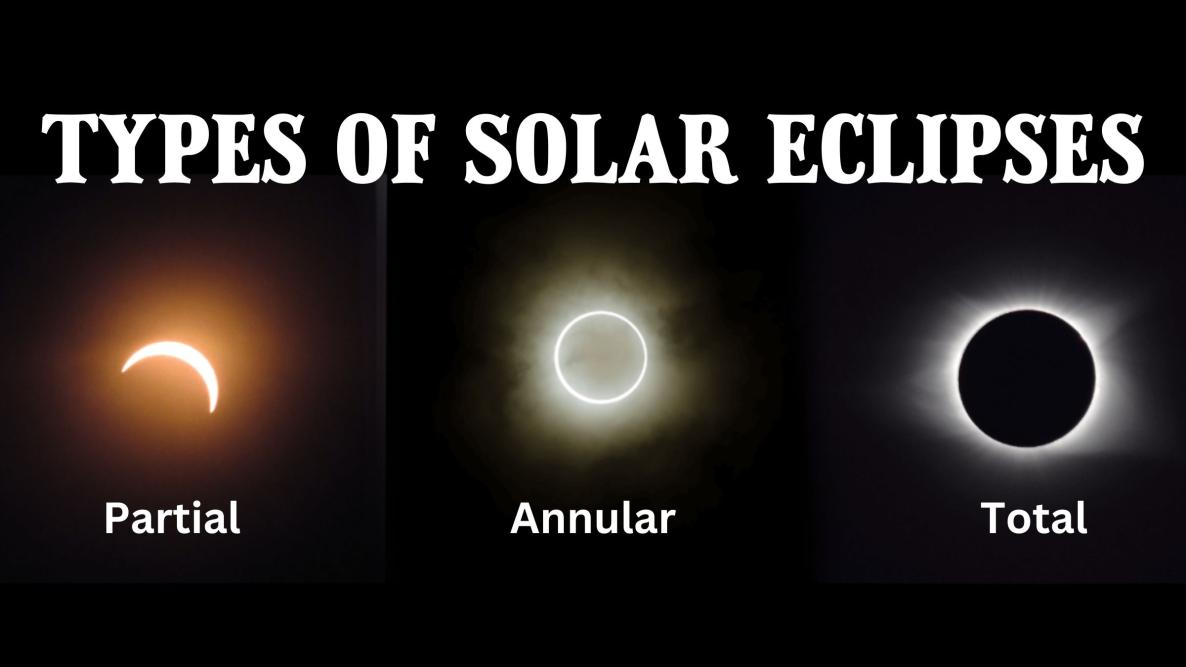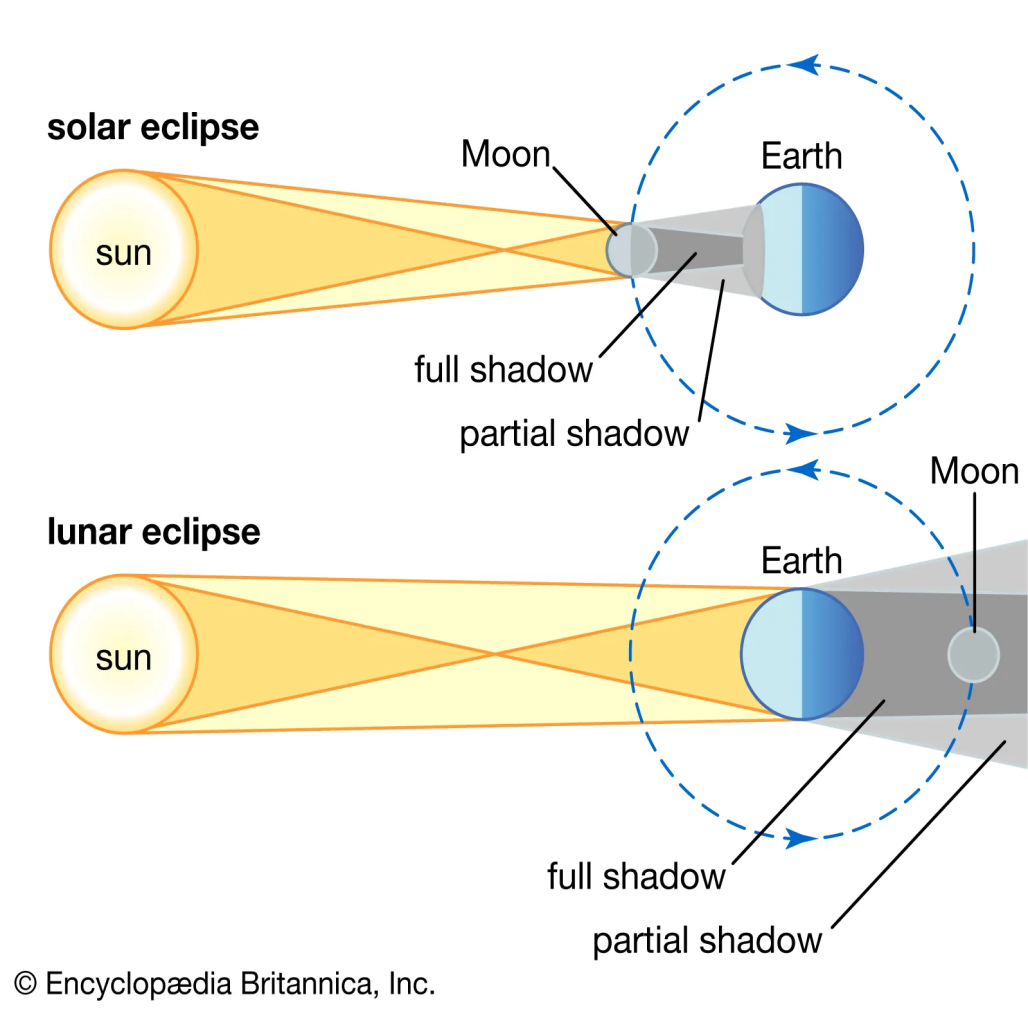Free Courses Sale ends Soon, Get It Now


Free Courses Sale ends Soon, Get It Now



Copyright infringement not intended
Picture Courtesy: https://www.timeanddate.com/eclipse/total-solar-eclipse.html
Context: A total solar eclipse occurs when the Moon passes directly between the Earth and the Sun, resulting in the Moon's actual size to match or exceed that of the Sun as seen from Earth.
About Solar Eclipses
Types of Solar Eclipses

|
Directly looking at the Sun during a solar eclipse can cause eye damage. Special eye protection or indirect viewing techniques are essential. |
About Total Solar Eclipse
Alignment of Earth, Moon, and Sun

Size and Path of the Moon's Shadow (Umbra)

Frequency and Distribution
Conclusion
Source:
|
PRACTICE QUESTION Q. Consider the following statements in the context of the solar eclipses: 1. It occurs when the Moon comes between the Sun and the Earth, blocking the sunlight. 2. It can only occur during a new moon phase. 3. It can be visible from all locations on Earth simultaneously. 4. It occurs more frequently than lunar eclipses. How many of the above statements are correct? A) Only one B) Only two C) Only three D) All four Answer: B |
© 2024 iasgyan. All right reserved